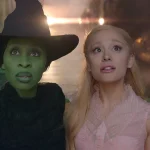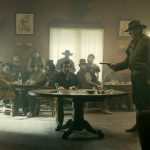🎬 Halloween (1978)
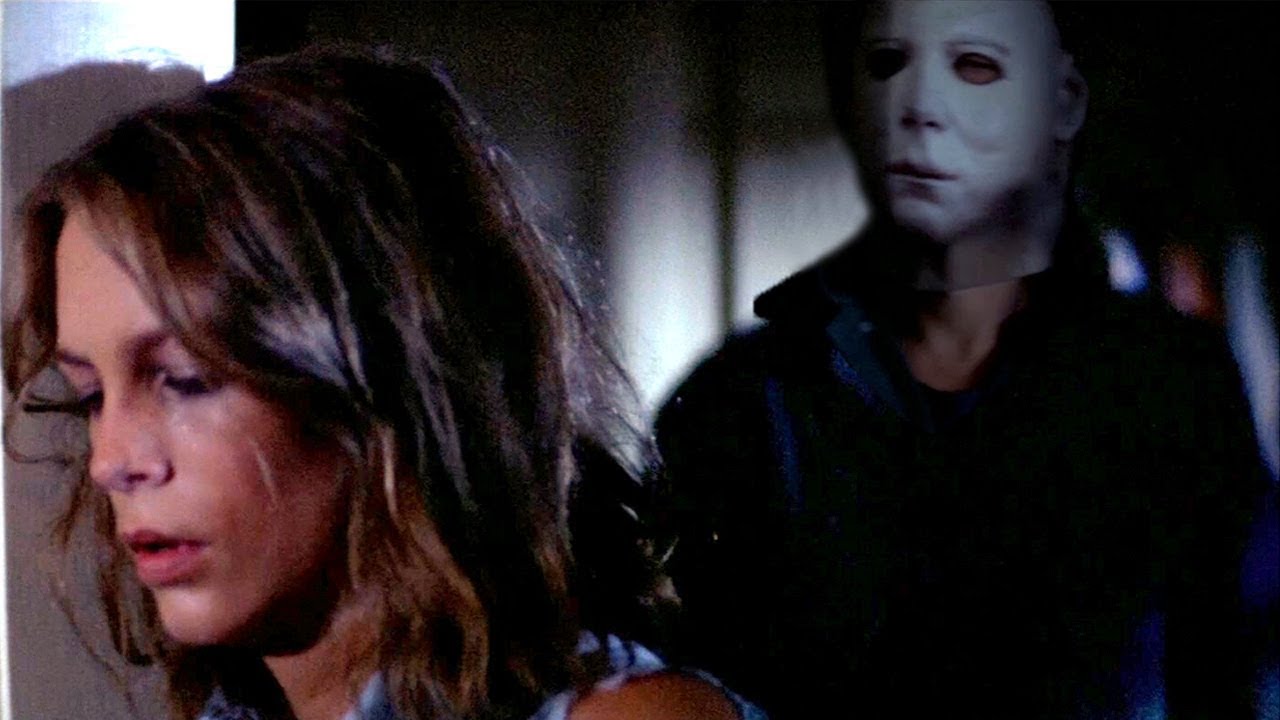
Halloween (1978): The Birth of a Slasher Legend
Directed by John Carpenter, Halloween (1978) is a horror classic that defined the slasher genre and introduced one of cinema’s most iconic villains: Michael Myers. With its minimalist storytelling, eerie atmosphere, and groundbreaking score, Halloween has left an indelible mark on pop culture and continues to terrify audiences over four decades after its release.
Plot Overview: The Shape of Terror
The film begins in Haddonfield, Illinois, in 1963, with a chilling opening sequence where a young Michael Myers brutally murders his older sister on Halloween night. Institutionalized for 15 years, Michael escapes from a mental hospital and returns to his hometown on Halloween in 1978.
Looming in the shadows, Michael begins stalking teenager Laurie Strode (Jamie Lee Curtis) and her friends. As night falls, the town’s quiet streets turn into a hunting ground. With Dr. Samuel Loomis (Donald Pleasence) desperately trying to track him down, Michael embarks on a relentless killing spree, solidifying his status as the embodiment of pure evil.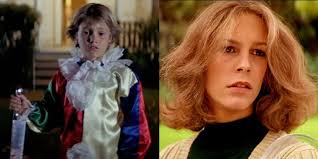
Jamie Lee Curtis: A Star is Born
Halloween marked the big-screen debut of Jamie Lee Curtis as Laurie Strode, a role that earned her the title of “Scream Queen.” Curtis delivers a relatable and nuanced performance as the resourceful babysitter who becomes the primary target of Michael Myers. Her transformation from an unsuspecting teenager to a courageous survivor is one of the film’s most compelling elements.
Curtis’s portrayal set a new standard for the “final girl” trope, emphasizing intelligence and resilience over helplessness. Laurie Strode remains one of the most iconic characters in horror cinema.
Donald Pleasence: The Pursuer of Evil
Donald Pleasence delivers a memorable performance as Dr. Samuel Loomis, Michael’s psychiatrist turned determined pursuer. Loomis provides the film’s psychological depth, describing Michael as “purely and simply evil.” Pleasence’s intensity and gravitas elevate the film, making him a crucial counterbalance to Michael’s silent menace.
John Carpenter’s Direction: Minimalist Mastery
John Carpenter’s direction is a masterclass in tension and suspense. With a modest budget of $325,000, Carpenter creates a chilling atmosphere using long takes, strategic camera angles, and an iconic score composed by Carpenter himself. The use of the first-person perspective in the opening scene, seen through young Michael’s eyes, is groundbreaking and immediately sets the tone for the film.
Carpenter’s restrained approach avoids excessive gore, instead relying on the power of suggestion and anticipation to terrify the audience. This minimalist style makes Halloween timeless, proving that less is often more in horror.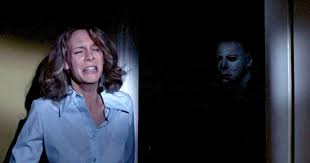
The Iconic Villain: Michael Myers
Michael Myers, referred to as “The Shape” in the credits, is the personification of fear. With his emotionless white mask, slow and deliberate movements, and relentless pursuit of his victims, Michael represents an unstoppable force of nature. The film offers no explanation for his motives, which only adds to his mystique and makes him even more terrifying.
The lack of dialogue from Michael enhances his enigmatic presence, leaving audiences to project their fears onto this faceless killer.
The Legendary Score: Music as a Character
One of the most memorable aspects of Halloween is its haunting score, composed by John Carpenter. The film’s main theme, with its eerie 5/4 time signature, is instantly recognizable and synonymous with terror. The minimalist piano melody creates a sense of unease, acting as a constant reminder of Michael’s looming presence.
The score plays a crucial role in building tension, turning ordinary moments into nerve-wracking experiences. It’s a prime example of how music can elevate a film and become a character in its own right.
Themes of Innocence and Evil
At its core, Halloween explores the collision of innocence and evil. Laurie Strode embodies purity and responsibility, serving as a stark contrast to Michael Myers’ malevolent force. The suburban setting of Haddonfield, with its picturesque streets and quiet homes, becomes a stage for unspeakable horror, symbolizing how evil can infiltrate even the safest spaces.
The film’s subtext about the loss of innocence, especially in the context of the late 1970s, resonates deeply. It taps into universal fears about vulnerability, safety, and the unknown.
Memorable Scenes That Defined Horror
- The Opening Sequence: Michael’s first-person perspective as a child, culminating in the shocking reveal of his crime, is a masterful introduction to his character.
- The Closet Scene: Laurie’s desperate attempt to fend off Michael in the iconic closet sequence showcases Carpenter’s skill at building claustrophobic tension.
- The Final Standoff: The moment Laurie believes she’s defeated Michael, only for him to rise again, cements his status as an unstoppable force.

Critical Reception: A Horror Milestone
Upon its release, Halloween was both a critical and commercial success, grossing over $70 million worldwide and becoming one of the most profitable independent films of all time. Critics praised its innovative direction, atmospheric tension, and chilling villain.
- Roger Ebert called it “a visceral experience” and praised its ability to terrify without relying on gore. (rogerebert.com)
- Rotten Tomatoes gives the film a 96% approval rating, highlighting its status as a genre-defining classic. (rottentomatoes.com)
Legacy: The Blueprint for Slashers
Halloween laid the foundation for the slasher genre, inspiring countless films such as Friday the 13th and A Nightmare on Elm Street. Its influence extends beyond the horror genre, with filmmakers citing Carpenter’s techniques as inspirations for their own work.
The film spawned numerous sequels, reboots, and reimaginings, each attempting to recapture the magic of the original. Despite the mixed quality of its successors, the 1978 film remains the gold standard, with its impact felt in modern horror to this day.
Final Thoughts: A Timeless Classic
Halloween (1978) is a masterwork of suspense and minimalism that continues to captivate audiences. Its enduring appeal lies in its ability to evoke fear through atmosphere, storytelling, and an unforgettable villain. Whether you’re a horror aficionado or a newcomer to the genre, Halloween is essential viewing—a film that reminds us why we fear the dark.





